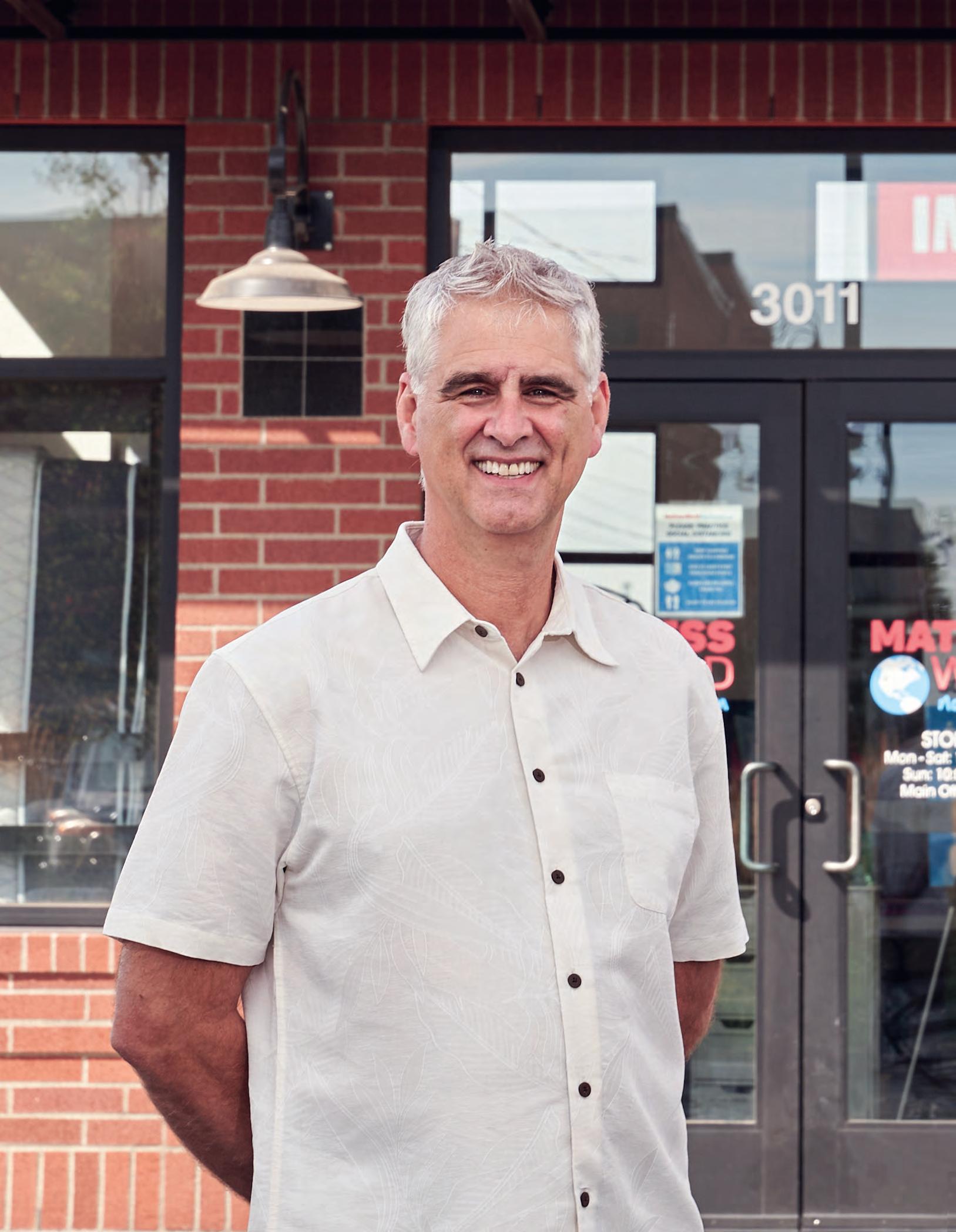
































 By Donovan Darling, Staff Writer
By Donovan Darling, Staff Writer
German choir boys, Egyptian pharaohs, the Brothers Grimm, and Queen Elizabeth I all shaped our Christmas treats and their storied past.
Decorate your Christmas tree, stir your hot cocoa, or eat a classic treat, because candy canes are the most versatile and best-selling non-chocolate candy during December, with almost 2 billion produced every year. But did you know that candy canes were likely invented for fidgety German choirboys?
Data suggests the candy cane goes back to 1670, when the Cologne Cathedral choirmaster in Germany needed to quiet down his choir boys during the Living Creche ceremony (live nativity scene). Carly Schildhaus of the National Confectioners Association says “[he] handed out sugar sticks among his young singers to keep them quiet.” It’s rumored the church elders were upset because sweets were inappropriate in church, so the choirmaster shaped the sugar sticks into shepherd crooks (like the nativity scene) to appease the church elders. This could be a coincidence, however, as candy canes were likely hung on Christmas trees during this time, along with fruit and cookies.

11th century Europe when the Crusaders brought ginger back from the Middle East. Once ginger became more affordable, gingerbread gained popularity.

Early European recipes for gingerbread called for ginger, sugar, rosewater, stale breadcrumbs, and ground almonds, which were mashed into a paste and pressed into wooden molds. These work-of-art molds made a storyboard that told the major news and took the shapes of kings, queens, emperors, and more. Cookies were sometimes decorated with edible gold or flat white icing.
Interestingly, candy canes used to be only white for hundreds of years. It wasn’t until the early 20th century and the advent of mass production that the iconic red-striped peppermint candy cane came into existence.

According to Egyptian, Greek, Roman and Germanic mythology, honey was a gift of the gods with the power to heal, give life, and banish demons. Gingerbread, in its early form as spiced honeybread, was found in pharaohs’ tombs dating to 1500 BC. Later, a more modern gingerbread appeared in
In 16th century England, flour replaced the stale breadcrumbs, and sweeteners and eggs were added. Incredibly, Queen Elizabeth I is credited for creating the first gingerbread man, which shocked visiting dignitaries who were given cookies made in their likeness. At fairs, gingerbread was tied with a ribbon and exchanged as a token of love. The gingerbread house gained popularity in Germany after the Brothers Grimm published their fairy tales, including “Hansel and Gretel,” in the 19th century. Later, German immigrants brought this lebkuchenhaeusle to America.
Today, gingerbread is often made with ginger, anise, cardamom, cloves, cinnamon, nutmeg, and sweetened with honey, corn syrup, brown sugar, or molasses. It comes in many forms, such as gingerbread people, houses, ginger snaps, and more. So when you’re munching on a gingerbread man or hanging candy canes on your Christmas tree, remember the countless individuals who quite literally shaped these fascinating treats!
What if you could restore your broken tooth in one dental visit? What if you could restore your damaged tooth to its original, healthy condition? What if your newly restored tooth looked and felt like a natural, new tooth? No metal, no artificial-looking crown. Well, now you can. CEREC tooth restorations are the closest you can get to natural teeth.





If you have a large cavity or root canal, a CEREC restoration may be right for your tooth. No dental technique available today comes closer to your natural teeth. In a single visit, we capture a 3D image of your tooth, and in just 15 minutes the CEREC system generates a perfectly matched “puzzle piece” to fit the part that’s decayed or broken. This is the piece that we bond onto the existing, healthy part of your tooth to complete the CEREC restoration. Healthy, natural, and convenient. Your natural enamel is what protects the interior of your teeth. The more healthy enamel we preserve, the stronger your tooth will be and the longer it will last. CEREC restorations allow us to save every sliver of healthy enamel possible. In fact, the CEREC restoration actually bonds with your existing tooth, renewing your natural enamel seal. CEREC restorations fit into your mouth like natural teeth. The software allows us to contour the outer shape of the “puzzle piece” to fit not only the tooth being restored, but the other teeth it comes into contact with. Of course we also match the color to your existing teeth. We use biocompatible pressed ceramic for a natural look and feel. This material acts so much like your natural teeth, it is simply amazing. And you’ll love getting your CEREC done within a single visit.
• Teeth restored to natural strength and beauty.
Looks natural, reflecting natural tooth shape and color.

Wears evenly with opposing teeth.
Expands and contracts the same as a tooth.
Single-visit treatment. No messy impressions, no lab work.
Highly-durable and long-lasting

A SpanishAmerican movie written and directed by Spaniard Sergio Pablos, this is a wonderful alternate origin story of Santa Claus. In the movie, Klaus is a reclusive toymaker living in a fictitious 19th-century island town in the Far North who’s befriended by a mail man misfortunately stationed there. The animations are slick and fantastical, the characters well-voiced and sympathetic, and in this moody yet romantic world a heartfelt mystery unfolds. And the movie was nominated for an Academy Award for Best Animated Feature, the first animated Netflix film to ever be nominated. Starring Jason Schwartzman, J. K. Simmons, Rashida Jones, Will Sasso, Norm Macdonald, Joan Cusack, and more. This is a newer must see for the whole family. Rated PG.

One of my all time favorites, this Ron Howard flick stars Jim Carrey in yet another “how did he do that?” stellar performance. Based on and expanding from the book,
this movie brilliantly recreates the Who world in all its magic, humor, and whimsy. We learn the Grinch’s new origin story as a bullied child who retreats to his mountain cave, and many years later he returns as he’s nominated to be the Holiday Cheermeister. A classic Us vs. Them, it’s also a tale of love, inclusion, community, and redemption, and a lovely expansion from the original movie and book. This star-studded cast also includes Taylor Momsen, Christine Baranski, Molly Shannon, Jeffrey Tambor, Bill Irwin, and more. A classic movie that’s great for the whole family. Rated PG.



Produced and co-written by Chris Columbus (Home Alone), this is a lesser known cult classic begging to be watched. Starring Arnold Schwarzenegger, Sinbad, Phil Hartman, Rita Wilson, Jake Lloyd, and cameos from Jim Belushi and Robert Conrad, the uncanny cast carries the thinly-plotted movie about sell-out toys and the commercialization of Christmas. Howard (Arnold), a father and husband who chooses work over his family, soon learns his lesson when he delays and discovers his son’s Christmas toy of choice has sold out. From there, it’s a hyperbolic romp of Howard and Myron (Sinbad) maniacally running all over town in a flurry of hijinks, pranks, and fatherly desperation. It’s fun, silly, and emphasizes the importance of family over material goods for Christmas. A tad violent in a cartoony way, it’s rated PG but views like a soft PG-13.
Pitch black, violent, and cynical, it’s a gritty postmodern Christmas movie just for adults. Chris Cringle (Mel Gibson) is a down-andout Santa barely surviving–kids have become so ruthless that half of them are on the naughty list, toy production has succumbed to outsourcing, and the U.S. government has halved their subsidy. This forces Chris to take on a shocking new government contract of production to pay the bills. After Christmas, a ruthless rich kid who, after justifiably receiving coal, hires a hitman (Walter Goggins)–who eerily and obsessively collects and stores Santa-made gifts–to kill Santa. All culminating in an ultimate showdown. It’s dark, serious, and surprisingly entertaining. Not for the faint of heart. Rated R.
Christmas movies to also include in your movie marathon: Die Hard (1988, R), Scrooged (1988, PG-13), Home Alone 2 (1992, PG), The Family Man (2000, PG-13).
Stream these movies where available, or rent from your local movie store, library, or rental kiosk.























































Locally owned and operated, Mattress World Northwest (MWNW) is the preeminent mattress retailer in the northwest. As an integral part of our local community, they have consistently served our sleep needs for over 27 years.
Sean Hathaway and his amazing team of professional associates are well-trained to match each customer with the sleep system best designed to meet our individual needs by assessing personal sleep histories, sleep postures, patterns, tendencies, and preferences.

At the heart of their business lie three core values. First is their sincere dedication to helping every customer get a better night’s sleep. They have the largest selection of name brand mattresses and specialty mattresses in the Northwest, from handmade to 100% natural latex, as well as adjustable frames. They carry every type of mattress for every type of sleeper!
Second, MWNW believes in empowering employees to live their best possible lives. Happy employees means happy customers, so you can trust you’ll be greeted with a smile and an attentive ear. Mattress purchases are done only a handful of times in our lives. That experience, good or bad, leaves a lasting impression. At MWNW, they have perfected the process to ensure that you get the best possible service and overall experience every time.
Third, and perhaps most impor tantly, is their dedication to philanthropic work. MWNW’s ongoing support of many different local charities and/or schools is provided in a variety of ways. With donations in excess of $230,000 – giving back to the community is an integral part of what defines this organization.

In December, we are all about raising awareness for and donations to Special Olympics Oregon. Taken directly from their website, “Special Olympics Oregon provides yearround sports training and athletic competition in a variety of Olympic-type sports for children, youth and adults living with intellectual disabilities, giving them continuing opportunities to develop physical fitness, demonstrate courage, experience joy, and participate in a sharing of gifts, skills, and friendship with their families, other Special Olympics athletes, and the community.” MWNW is gladly donating to this incredible cause as well as raising awareness by offering to take donations on the organization’s behalf. Please help raise funds by donating online or visiting one of their local stores.
IN TODAY
A BETTER NIGHT’S SLEEP! Visit mattressworldnorthwest.com for a location near you or call 503-594-0551 to order by phone.
HILLSBORO 3011 SE 75th Ave • 503-747-6427
WASHINGTON SQUARE 87755 SW Cascade, Beaverton • 503-567-3321
WILSONVILLE 29660 SW Town Center Loop • 503-218-4497
OPEN DAILY
10 am -8 pm MON-SAT 10 am -7 pm SUNDAY
VISIT US ONLINE FOR A LOCATION NEAR YOU ORDER BY PHONE: 503-594-0551
They’ve got our backs ... literally!




































Getting married and need a ring? Break a clasp or prong? Sherrie’s Jewelry Box, “Your Personal Jeweler,” specializes in custom fine jewelry, jewelry alterations, and jewelry repair, including watch repair and battery replacement. Sherrie’s jewelry is designed and crafted in-house or acquired from reputable conflict-free companies with verified product sources. Whether you shop at Sherrie’s Jewelry Box in-store or online, you’ll get the same quality jewelry worthy of commemorating that special event in your life.
Sherrie Devaney, Owner of Sherrie’s Jewelry Box, is pretty much a “Jill of All Trades” for this boutique jewelry business as she does much of the “heavy lifting” herself. Fascinated with “all things jewelry” after taking a metal arts class in middle school, Sherrie has been “messing with” jewelry ever since. “The teacher taught us to cast and everything,” Sherrie says joyfully. Acting on all that enthusiasm and passion, in 1987 Sherrie started working as an independent contractor for the “big box stores.”
which identifies Sherrie’s Jewelry Box selections. Catalogs, both mail-out and online, are available for customers to browse at their convenience. Patrons will also receive a Thank You in appreciation for their orders, and first-time buyers will receive some additional information on Sherrie’s as well.

Some of the more popular items you will find in Sherrie’s Jewelry Box are a wide selection of artistically designed earrings. Who can resist the temptation of accessorizing every outfit with a different set of earrings? Stunning bracelets and uniquely conceived necklaces await you as well. Rings of every configuration are at your fingertips, ready for that special gift or Life Event.
Sherrie feels truly blessed to extend her first-generation, family-owned and operated business to the Tigard community and beyond. With the help of her two sons, Ronnie and Jonny, her nephew Garrett (the jewelry photographer), and the never-

As a behind-the-scenes contractor, Sherrie missed out on all the “hugs and excitement” of the happy retail clients, which in turn led to her opening a retail shop of her own. Today, you’ll find Sherrie’s Jewelry Box on Tigard’s Main Street in the prime spot where Chrisman Frame Shop had been. Her son Ronnie, a teenager at the time, found the location and all but secured it on her behalf without Sherrie knowing anything about it!
With the beautiful Main Street storefront for in-person shopping, and an amazing website which utilizes Etsy for online sales, Sherrie’s Jewelry Box is an excellent source for all your fine jewelry purchases. Sherrie’s online store also features Estate, Vintage, and Consignment jewelry (a.k.a. Previously Loved); and be sure to look for the SJB logo on the image
ending support of her husband David, Sherrie’s Jewelry Box is a neighborhood business with long-standing commitment. “I’m still here. I’ve been here for years,” says Sherrie. “We’re strong and we’re stable.” An active member of the Tigard Chamber of Commerce, Sherrie participates in almost every event!


Visit Sherrie’s Jewelry Box at 12425 SW Main St. in Tigard and catch a bite to eat at The Break Room at Sherrie’s Jewelry Box (Sherrie’s food court pod out back).
Give them a call at (503)598-0144, email sherriesjewelrybox@ yahoo.com, and shop online at sherriesjewelrybox.com


 By Robert Matsumura, Contributing Writer
By Robert Matsumura, Contributing Writer

What trip to Mount Hood is complete without a visit to Timberline Lodge? As an Oregonian you are likely familiar with this iconic landmark nestled at the base of the state’s most prominent mountain, but are you aware that this historic alpine retreat was developed as a symbol of hope during one of the bleakest periods in American history?
Under President Franklin D. Roosevelt, the Works Progress Administration (WPA) was established in 1935 as a program to boost the economy by funding state and city projects. These public works projects generated jobs for millions of unemployed Americans victimized by the catastrophic economic downturn triggered by the stock market crash of 1929—known today as the Great Depression.
Timberline Lodge was conceptualized by a number of individuals including Jack Meier of the Mount Hood Development

Association, Francis E. (Scotty) Williamson Jr. of the United States Forestry Service, and Emerson J. Griffith, the WPA Director for Oregon. Timberline Lodge was envisioned as a triumphant symbol of the WPA, and a shining example of what it could achieve.
After funding approval from the WPA in December of 1935, Gilbert Stanley Underwood was selected as the lead architect for the project. Underwood had already successfully designed lodges at many national parks, including Yosemite and Bryce Canyon. Similar to the other lodges Underwood had completed, Timberline was planned as a rustic, asymmetrical structure with a rough-hewn style reminiscent of the region’s early pioneers. Underwood also suggested the lodge incorporate native materials, and that decorative elements be implemented honoring both the area’s Indigenous peoples and the pioneer settlers who had arrived on the Oregon Trail.
Constructed between 1936 and 1938, the total cost of Timberline Lodge was $695,730, of which 80 percent of the cost went to labor. Skilled trade workers made ninety cents an hour, and unskilled laborers received fifty-five cents an hour. A number of
the stonemasons were Italian immigrants and had been brought over from their homeland to work on the Historic Columbia River Highway. Workers were housed in a nearby tent city at Camp Zig Zag and Summit Meadow.

Two key goals of the WPA were to foster independence through training and to encourage private enterprise. Ray Neufer, who was in charge of the Oregon WPA woodworking shop, explained that many of the men who crafted the newel posts (support pillars for stairwells) were inexperienced as carvers. Neufer recalled: “Most of the men came in from construction projects and they didn’t know they could do some of the things they did. Most of them had been out of work a long time, then on construction jobs, and they had lost their self-confidence.”
Material costs for the lodge were kept to a minimum by utilizing recycled materials. Female seamstresses wove upholstery, drapery, and bedspreads. Hooked rugs were fashioned from old Civilian Conservation Corps camp blankets. Discarded cedar utility poles became lodge posts, their crowns hand-carved in the shape of seals, birds, and bears. Tire chains were welded into fireplace screens. And the signature iron work, as well as andirons, were crafted from railroad tracks.
The decorative and stylistic elements of Timberline Lodge were directed by Margery Hoffman Smith, the Oregon Arts Project Administrator for the Federal Arts Project. Smith created many of the beautiful patterns for the textiles and rugs, and she designed the iconic “Snow Goose,”
the 750-pound bronze weathervane perched atop the lodge. Smith’s inspiration for the forms and motifs resplendent throughout the lodge are derived from the art of the Tenino, an Indigenous people of the area. Smith, too, recalled how many of the workers on the project successfully transitioned their skills into new areas: “Carpenters became cabinet makers, blacksmiths became art metal workers, and sewing women became expert drapery makers.” For her work on Timberline Lodge, Smith earned the title of “Grand Dame” of the Arts and Crafts style, and in 1979 Governor Vic Atiyeh awarded her the Governor’s Award for the Arts.
While on tour of government projects in the Western United States, President Franklin D. Roosevelt dedicated Timberline Lodge on September 28, 1937, five months before its opening to the public. He and his First Lady, Eleanor Roosevelt, arrived at the lodge via an open touring car, escorted by a motorcade of forty vehicles. As they wound their way up the Mount Hood Loop Road, horsemounted Forest Service personnel lined the roadway to salute and wave. From the terrace overlooking the main entrance, Roosevelt addressed a gathering of 1200 community members. “This venture was made possible by WPA emergency relief work,” he said, “in order that we may test the workability of recreational facilities installed by the government itself.” To this day, Roosevelt’s dedication on a bronze tablet is set in stone on the lodge terrace.
Following completion, Timberline Lodge was turned over to the U.S. Forest Service in January 1938, and opened to the public on February 4th of the same year. The Magic Mile chairlift was completed by the Riblet Tramway Company, and the WPA built the Silcox Warming Hut at the top of the lift.
Timberline Lodge was closed during World War II, but reopened again in 1945. However, discovering that the lodge and ski facilities had not been maintained properly, the U.S. Forest Service revoked the operating permit. Months later, Richard L. Kohnstamm was awarded an operating permit. He successfully restored the lodge, re-established ski education programs, and oversaw the construction of an outdoor swimming pool. In 1975, convention facilities were also added, and in 1981 the

Wy’East Day Lodge was built across the parking lot to serve the recreational skiers. Although Kohnstamm passed away in 2006, his family continues to operate the lodge through R.L.K. and Company.
Not surprisingly, Hollywood also found Timberline Lodge appealing. The exterior views of Timberline Lodge were used in the movie The Shining. Stanley Kubrick’s adaptation of the bestselling Stephen King novel depicted Timberline Lodge as the fictitious Overlook Hotel.
In 1975, the Friends of Timberline organization was formed to celebrate and preserve the heritage of Oregon’s signature mountain retreat. Two years later, on December 22, 1977, Timberline Lodge was designated as a National Historic Landmark, and the finest example of WPA mountain architecture. The next time you find yourself bound for Mount Hood, be sure to stop by Timberline Lodge. Stand atop the terrace where FDR stood, and appreciate the vision, commitment, and labor of the many men and women who made this grand concept into a reality, which generations of Oregonians have held so close to their hearts.

Timberline Lodge on September 28, 1937, five months before its opening to the public.Timberline Lodge interior Timberline Lodge plaque








































